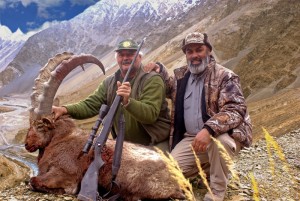Major Wildlife conservation Challenges in Pakistan –Last part
Friday, December 23rd, 2011 12:40:33 by Naveed A Bari
Major Wildlife conservation challenges in Pakistan –Last part
Lot of credible work has been done in the conservation of dwindling Snow Leopard population, which mostly inhabits the difficult and rugged terrains of Khunjerab National Park and the Baltistan area, close to the Chinese border. Initiatives were taken to
train the local guides and scouts, the insurance of the livestock of the local people, in the conservation of the main prey of the snow leopard i.e. the Ibex, Markhor, Urial and blue sheep etc, and intensive surveying and documentation of the cats and their
respective territories.
The government has also enacted strict laws on illegal hunting and trade of its bones and hides, mostly sold for Chinese traditional medicine making. The Himalayan Brown bear, found strictly in Deosai national park, is now considered out of the danger zone
and its population is said to be stable for the moment, owning particularly to the laws pertaining to its hunting and poaching. The Asiatic Black bear’s population, however, has experienced a sharp decline as it is often hunted for its bile which is used in
traditional medicine making, and is also captured alive for the game of bear baiting practiced in the urban and suburban areas of Pakistan. It is now rarely spotted in the Kashmir area and many conservation organizations have pressurized the government to
enforce strict laws in this regard and ensure severe fine and punishments to the offenders.
The conservation of Markhor, found in Western Balochistan, the Khyber Pakhtoonkhaw and the northern areas of Pakistan, has been one of the success stories in the conservation history of the country. In the year 1985, its population in the Torghar area of
Baluchistan dropped to less than 100. It is extensively hunted for its prized head as its horns can be as long as up to 36 in. A licensed hunting program was developed to generate revenue as well as to check illegal hunting. Pakistan is the only country with
CITES hunting authorization for Markhor with a quota of 12 trophies each year. Torghar conservation program has helped increase the Markhor population to more than 1648. Torghar is now considered as the last stronghold of the internationally threatened straight-horned
Markhor.
The Indus Dolphin has also been the victim of the increasing population and man’s interference in nature. It has a poorly developed retina therefore also often called as the Blind dolphin. Its population sharply decreased after the Indus water Treaty between
India and Pakistan which enabled Pakistan to build dams and barrages and draw canals to irrigate its thousands of acres of barren land. The dolphin’s habitat now stretches to just 1200kms and is often found entangled in fishing nets and trapped in canals.
WWF has carried out several training courses among the locals to help them better understand the importance and methods of its conservation.
Among other notable conservation projects are those of the marine turtles ( Green and leatherback) found off the coast of Makran district, the Houbara Bustard, golden eagle, the Siberian crane migratory birds form the steppes of Russia and Siberia.
Tags: Indus Dolphin, IUCN, KPK, Sindh, Snow Leopard, WWFShort URL: https://www.newspakistan.pk/?p=7141

















